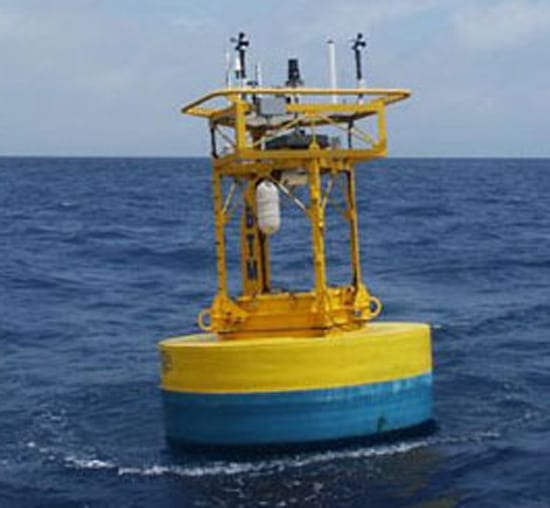How Does Iron Get Into the Ocean?
February 23, 2006
Marine scientists and engineers have created a new tool to track an essential ingredient on which life in the oceans depends: iron. The instrument, deployed on a buoy off Bermuda for four months in 2004, collected wind-blown particles in the open ocean over time, indicating that two large African dust storms in the summer transported large quantities of iron-containing “dust” to the Sargasso Sea in the western North Atlantic. Like humans, marine plankton require iron to live and grow; when iron is added to certain regions in the oceans, it can catalyze blooms of life at the base of the food chain. A considerable amount of iron in the sea comes from continents, in the form of wind-blown particles, but scientists have been hampered by an inability to measure when and how aerosol iron deposits into the oceans. Previous work relied on measurements from islands. Based on the initial success of this new instrument, scientists will redeploy an improved particle-sampling device off Bermuda in 2007 and 2008. Buoy-mounted samplers, deployed in strategic locales, can help unravel a fundamental but previously hard-to-measure process that fuels life on our planet.

